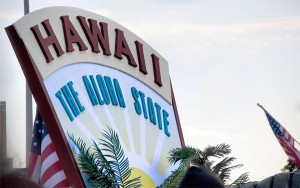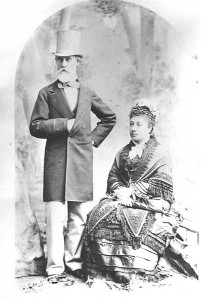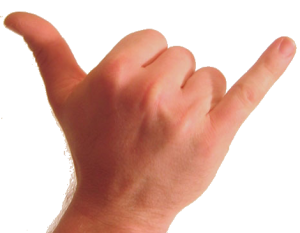Inaugural Parade! (Plus some Hawaii pointers)

The Hawaii state float in the inaugural parade. Photo: Victoria Pickering, CC some rights reserved
Well, President Barack Obama launched his second term with lots of hoopla earlier this week.
This former resident of Hawaii had to catch bits and pieces of the coverage off different live-stream feeds on the Internet. The parade, especially, prompts a few comments and cultural pointers.
In no order of importance, a good parade really reminds me how much fun drums can be. Marching drum cadences are cool. March music isn’t everyone’s thing. But if you get into the spirit of that sound, it resonates.
Outsiders probably have no idea how much goes into a good marching band, from musicianship to march patterns to plain old discipline and stamina. (I’m no expert, but the one year I participated was educational.) On Monday I couldn’t watch the whole inaugural parade, so I grabbed a John Philip Sousa CD for the car and kept that march groove going for just a bit longer.
It’s likely you know some Sousa even if the name isn’t familiar. Should “The Stars and Stripes Forever” not ring a bell, recall the alternate lyrics “Be kind to your web-footed friends” (for a duck may be somebody’s mother). There’s plenty out there about Sousa, including archives of his marches from the 1890’s at the Library of Congress website.
Hawaii was favored with not one but two marching bands in Monday’s Inaugural parade: the first was the President’s alma mater, Punahou, followed shortly thereafter by one from Kamehameha Schools.
Hawaii station KITV did a spot on practicing for the parade. Note the shirtless musicians, using the “chilly” temps (in the low 70’s) to try get ready for the real cold to come in Washington D.C.
Punahou has a Facebook page sharing Inauguration images. And there’s video of the Punahou band marching past the reviewing stand here, or Kamehameha’s turn here (beginning at 4:38 into the longer clip). Students from Kamehameha also provided cultural depth to one of many ‘unofficial’ parties that night, the Hawaii State Society Inaugural Ball, which featured leis and roast suckling pig.
Maybe you care, maybe you don’t, but those schools have unique histories. Punahou is a private academy founded by missionaries back in 1841. It’s costly and prestigious. Barack Obama was a scholarship student there, graduating in 1979. (He was a member of the Punahou boy’s basketball team that won the state championship in his senior year.)
The ABC commentators mangled the Punahou name horribly. Try this guys: “Poo-nah-ho” (Ho is like the English “hoe”, the tool for weeding the garden.)
Kamehameha Schools are also private, founded to educate Hawaii’s indigenous population at a time when disease and social/political transition seemed to threaten the survival of the Hawaiian people. (“Kah-may-ha-may-ha”.)

American businessman Charles Reed Bishop and Bernice Pauahi Bishop willed their estates to institutions that furthered Hawaiian education and culture. (photo: Wikipedia from Kamehameha Schools Archives)
Today, students of every race under the sun attend Kamehameha Schools – as long as they are at least partly of Hawaiian ancestry. Racial preferences for admission can generate controversy. I wasn’t planning to debate that here, other than to say the schools were established in hopes of countering a population’s precipitous decline, using funds from the private estates of a childless Hawaiian Princess and her spouse, a businessman from – wait for it – Glens Falls, New York. (It is a small world sometimes, eh?)
I’d also like to explain something few outside Hawaii seem to know. It is incorrect to refer to all people from Hawaii as Hawaiian. Yes, people from Texas are called Texans. If the term was only about geography, it would be fine. But there’s more going on and some of it is sensitive.
Barack Obama was born there, but he is not Hawaiian. My parents were born in Hawaii (when it was still just a territory) and still live there. They are not Hawaiian. As far as people from Hawaii are concerned, you are only Hawaiian if you actually are Hawaiian. Non-Hawaiians who are from Hawaii, are more properly (if awkwardly) described as being “from Hawaii”, or “Hawaii residents”. Maybe “Islander” could also serve – in a sideways capacity. But Hawaiian is not a blanket term.
Some non-Hawaiians try to bridge the distinction by calling themselves “Hawaiian at heart”. While there really is such a thing as being Hawaiian at heart, there are also times when people mean well, but are trying too hard.
It’s prestigious to be Hawaiian, thanks to a resurgence of cultural pride in the islands. That wasn’t always the case. So some considered it poor form to try appropriate that status in an untrue way, now that it’s cool to be Hawaiian.
How are you supposed to know if someone is “really Hawaiian” or not? Well, by and large, you can’t. Unless she or he self-identifies and isn’t just blowing smoke. So it may be best to avoid the term, unless you are confident of your facts.
I don’t hold much hope people from the mainland are willing to tackle this level of complexity. But here’s a (futile?) stab because it just grates so much to hear the term misapplied.
Next, about that mysterious signal: one hand, three fingers curled inward, thumb and pinkie extended. That’s called “shaka“. Not “call me” as mainland TV commentators guessed in its first appearance in the 2009 parade. ABC commentators did slightly better this year, calling it “hang 10” or “hang loose”, correctly linking the gesture to its use in surf culture.
Shaka is not a tradition from pre-contact, ethnic Hawaiian culture. It’s a fairly modern symbol adopted by local culture in Hawaii, which includes all races there. Except maybe newcomers from the mainland. (Which is yet another multi-layered saga of history and nuance. Not always a pretty one either. But I digress.)
Here’s a 25-image slide show of the 2013 parade from Yahoo News. Number 5 shows the President and First Lady flashing shaka signs. It’s not a very flattering photo, but there you go. (Long days include many looks.)
Anyway, it was a good time. The parade participants looks great: happy, diverse, American!
Let’s do it again four years hence. Shaka, brah!
Tags: Hawaii, Hawaiian, Inaugural Parade 2013, John Philip Sousa, Kamehameha Schools, Punahou School, shaka








